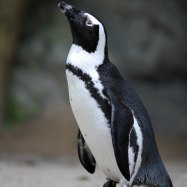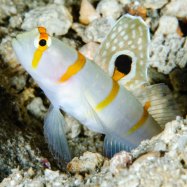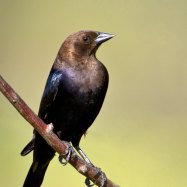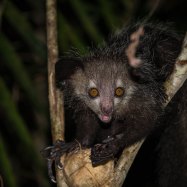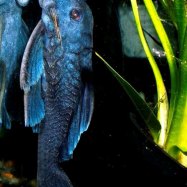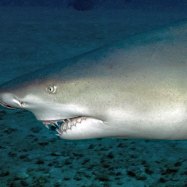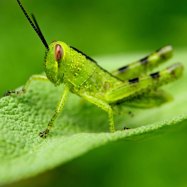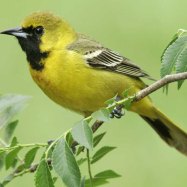
Olive Baboon
Up to 71 cm (28 in)
Did you know that the Olive Baboon, found in Africa, can reach up to 71 cm in length and weigh up to 31 kg? These stocky and muscular primates are part of the Cercopithecidae family and are known for their distinct olive-colored fur. Keep an eye out for these intelligent animals on your next safari adventure! #OliveBaboon #AfricanAnimals #Safari #Cercopithecidae
Animal Details Summary:
Common Name: Olive Baboon
Kingdom: Animalia
Habitat: Savannahs, woodlands, and forests
A Primate of Intelligence and Adaptability: The Olive Baboon
The African continent is home to a diverse array of wildlife, and among them is a fascinating primate known as the Olive Baboon (Papio anubis). With its unique appearance and remarkable adaptability, this primate has captured the attention of scientists and wildlife enthusiasts alike. In this article, we will explore the Olive Baboon and uncover the secrets of its success in the wild.A Brief Introduction to the Olive Baboon
The Olive Baboon is a member of the Cercopithecidae family, which includes other Old World monkeys like mandrills and guenons Olive Baboon. As suggested by its scientific name, Papio anubis, this primate is closely related to the sacred baboon (Papio hamadryas) and the hamadryas baboon (Papio cynocephalus). However, the Olive Baboon has successfully carved out its own niche in the African savannahs, woodlands, and forests, where it can be found in multiple countries across sub-Saharan Africa.The Physical Characteristics of the Olive Baboon
The Olive Baboon is a stocky and muscular primate, with adult males usually weighing up to 35 kg (77 lbs) and females up to 20 kg (44 lbs). They have a distinctive olive brown fur with a lighter underside, which gives them their name. As with most primates, their body shape is adapted for their lifestyle. They have long arms and a flexible body, allowing them to move quickly and efficiently through the trees. With a length of up to 71 cm (28 in), they are reasonably large primates, but it is their intelligence and adaptability that makes them truly stand out.The Diet and Feeding Habits of the Olive Baboon
Olive Baboons are opportunistic omnivores, meaning they have a varied diet that includes both plant and animal matter. Their diet includes fruits, seeds, roots, insects, small mammals, and birds Oak Toad. They are also known to occasionally hunt and eat other primates, such as young baboons or vervet monkeys. This adaptability is key to their success, enabling them to survive in various habitats and adapt to changes in their environment.Their feeding method is also unique, as they use both hands and feet to hold and manipulate their food. This behavior, known as "quadramanualism," is observed in very few primate species and requires a high level of intelligence and dexterity. They are also known to use tools, such as sticks, to fish for termites or dig for tubers. This ability to problem-solve and utilize tools is another demonstration of their exceptional adaptability.
The Social Structure of the Olive Baboon
The Olive Baboon lives in a complex and hierarchical social structure known as a troop. These troops can range in size from 10 to over 200 individuals, with a dominant male at the top of the hierarchy. Females and their offspring make up the rest of the troop, and they live in close-knit family units. The social structure of Olive Baboons is dynamic and can change as new individuals join or leave the troop.Within the troop, there is a clear social hierarchy, with dominant individuals having access to the best food and resources. The males also play a crucial role in protecting the troop from predators, which can include leopards, hyenas, and other primates. They use vocalizations and facial expressions to communicate with one another, and this complex system of communication plays a vital role in maintaining the stability of the troop.
The Adaptability of the Olive Baboon
As mentioned earlier, the Olive Baboon's intelligence and adaptability are key to its success in the wild. They have evolved to thrive in a wide range of environments, from savannahs to dense forests. They are also able to withstand changes in their environment, such as drought or habitat destruction, by altering their feeding behaviors or even moving to a new area if necessary. This adaptability has allowed them to survive as a species for thousands of years.One remarkable example of their adaptability was observed in Amboseli National Park in Kenya, where a group of Olive Baboons learned to feed on the toxic red beans produced by an invasive plant species. The beans, which are deadly to other species, have no effect on Olive Baboons. This demonstrates their ability to adapt and thrive in even the harshest of environments.
Challenges and Threats Facing the Olive Baboon
Like many other species in the world, the Olive Baboon faces several challenges and threats that could impact its survival. One of the main issues is habitat destruction, as human activities such as deforestation and agriculture encroach on their habitat. This not only reduces the amount of available food but also increases the risk of human-baboon conflict.The hunting of baboons for their meat and body parts, as well as their use in traditional medicine, also poses a threat to their survival. In some regions, they are seen as pests and are killed in large numbers. In addition, the spread of diseases from humans to baboons is also a concern, as they share many of the same illnesses.
Conservation Efforts for the Olive Baboon
Fortunately, there are ongoing efforts to protect the Olive Baboon and ensure its continued survival in the wild. In many areas, laws and regulations are in place to protect them from hunting and habitat destruction. Organizations like the African Wildlife Foundation and the Jane Goodall Institute work towards protecting the Olive Baboon and other primate species by promoting sustainable land use and education programs.Another critical aspect of conservation efforts is raising awareness and educating the public about the importance of protecting these animals. By showcasing the unique adaptations and behaviors of the Olive Baboon, we can inspire people to take action towards conservation.
The Unique and Adaptable Olive Baboon
The Olive Baboon is a primate that truly stands out for its intelligence, adaptability, and resilience. With its ability to thrive in various environments, utilize tools, and navigate complex social structures, it is no surprise that scientists and wildlife enthusiasts are fascinated by this remarkable primate. However, with continued efforts towards conservation and education, we can ensure that the Olive Baboon continues to flourish and contribute to the biodiversity of the African continent.
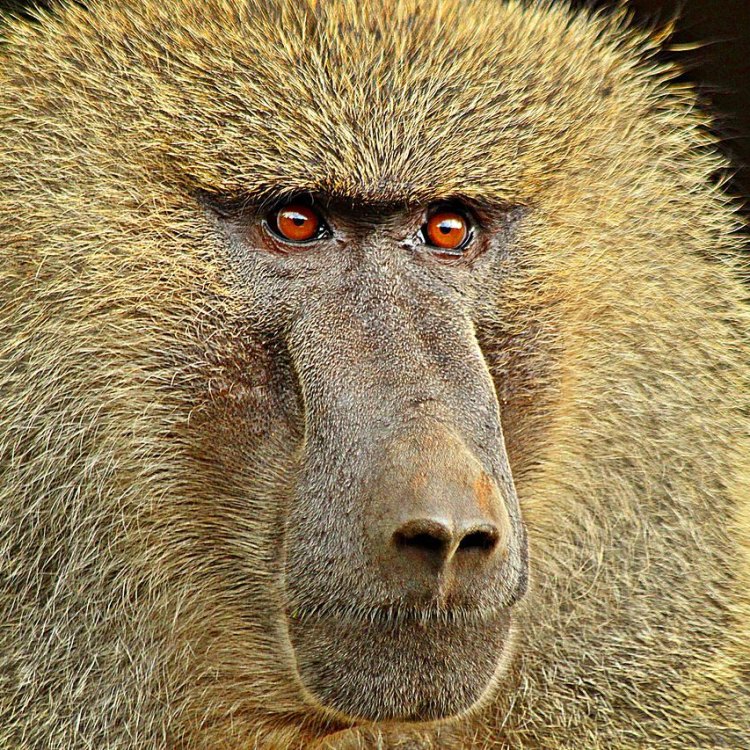
Olive Baboon
Animal Details Olive Baboon - Scientific Name: Papio anubis
- Category: Animals O
- Scientific Name: Papio anubis
- Common Name: Olive Baboon
- Kingdom: Animalia
- Phylum: Chordata
- Class: Mammalia
- Order: Primates
- Family: Cercopithecidae
- Habitat: Savannahs, woodlands, and forests
- Feeding Method: Omnivorous
- Geographical Distribution: Sub-Saharan Africa
- Country of Origin: Multiple countries across Africa
- Location: Africa
- Animal Coloration: Olive brown fur with a lighter underside
- Body Shape: Stocky and muscular
- Length: Up to 71 cm (28 in)

Olive Baboon
- Adult Size: Males: 22-37 kg (49-82 lb), Females: 10-15 kg (22-33 lb)
- Average Lifespan: Up to 30 years
- Reproduction: Sexual
- Reproductive Behavior: Mating occurs throughout the year
- Sound or Call: Loud calls, barks, screams, and grunts
- Migration Pattern: Non-migratory
- Social Groups: Large troop of individuals
- Behavior: Diurnal and highly social
- Threats: Habitat loss, hunting, and illegal wildlife trade
- Conservation Status: Least Concern
- Impact on Ecosystem: Seed dispersal and prey for predators
- Human Use: Hunting for meat and traditional medicine
- Distinctive Features: Prominent canine teeth, cheek pouches for storing food, and bare skin on the face
- Interesting Facts: Olive baboons are known for their complex social structure and hierarchical organization within troops. They are highly adaptable and can live in various habitats across Africa. Olive baboons have a diverse diet that includes fruits, seeds, leaves, insects, and small vertebrates.
- Predator: Lions, leopards, and hyenas
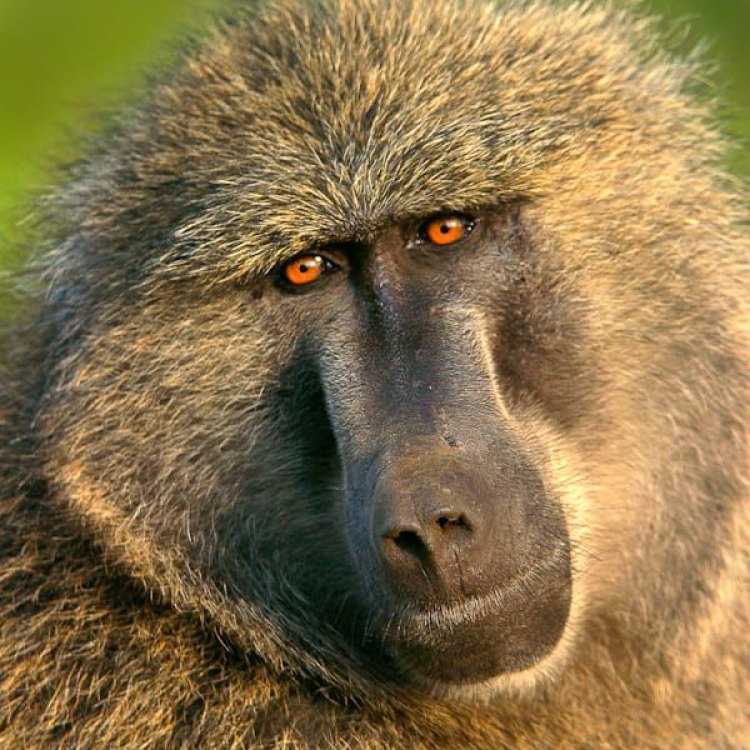
Papio anubis
The Fascinating World of the Olive Baboon
The African continent is home to a vast array of wildlife, each species with its own unique features and behaviors. Among them, the olive baboon (Papio anubis) stands out with its striking appearance and intriguing social structure. From its large size to its complex social hierarchy, this primate has captured the attention of researchers and animal enthusiasts alike. In this article, we will delve into the world of the olive baboon and discover what makes them such a fascinating species PeaceOfAnimals.Com.Anatomy and Physical Features
The olive baboon is a large primate, with males averaging between 22-37 kg (49-82 lb) and females weighing 10-15 kg (22-33 lb). They have a long, shaggy brown coat with a distinctive olive-green tint, giving them their name. Their bodies are muscular and well-built, adapted for their arboreal lifestyle.One of the most distinctive physical features of the olive baboon is their canine teeth. These are much larger in males than females and are used as weapons in conflicts within the troop and for hunting. Another unique feature is their cheek pouches, which they use to store food for later consumption. And, unlike other baboon species, olive baboons have bare skin on their faces, giving them a distinct appearance.
Social Structure and Behavior
Olive baboons are highly social creatures, living in large troops with anywhere from 20 to 200 individuals. Within the troop, there is a complex social hierarchy, with dominant males at the top and females below them Ornate Box Turtle. Interestingly, this hierarchy is not based solely on physical strength, but also on grooming and forming alliances within the troop.These primates are diurnal, meaning they are active during the day, and their social behavior revolves around foraging, grooming, and interacting with other members of their troop. They are also highly vocal, using a variety of sounds and calls to communicate with each other. From loud barks and screams to soft grunts, these calls serve as a way to warn of potential danger or signal food availability.
Reproduction and Mating Behavior
As with most primates, olive baboons reproduce sexually, with the mating season occurring throughout the year. However, during the mating season, males will compete for the attention of females by displaying their dominance and fighting with other males. Females will then select a mate, and the male will remain with the female until she gives birth.Gestation lasts for approximately six months, and females will give birth to a single offspring. The newborn will cling to its mother's belly for the first few weeks, after which it will ride on her back. Females are the primary caregivers of their offspring, but other troop members may also assist in raising the young.
Habitat and Distribution
Olive baboons are found across various habitats in Africa, including woodland, savannas, and even rocky cliffs. They are non-migratory and tend to stay within a relatively small range, moving depending on food availability. They are highly adaptable and can survive in both arid and moist environments, making them widespread throughout the continent.The distribution of olive baboons extends from the Democratic Republic of the Congo in the west to Ethiopia and Somalia in the east. They can also be found in countries such as Kenya, Uganda, Tanzania, and Sudan.
Threats and Conservation
Unfortunately, like many other species, olive baboons face threats to their survival. The biggest threat is habitat loss due to human activities such as deforestation and agricultural expansion. This not only decreases the baboons' available food sources but also leads to increased conflict with humans.Olive baboons are also hunted for their meat and used in traditional medicine, leading to a decline in their population. They are also traded in the illegal wildlife market, further endangering their existence.
Thankfully, due to their adaptability and widespread distribution, olive baboons are classified as Least Concern on the IUCN Red List. However, continued conservation efforts are necessary to ensure their survival in the face of human encroachment.
Importance to the Ecosystem
Olive baboons play an essential role in their ecosystem, both as seed dispersers and prey for predators. As they forage for fruits and seeds, they also carry seeds to new areas, aiding in the growth and regeneration of plants. Their presence also benefits other species, as they are a vital source of food for predators such as lions, leopards, and hyenas.Human Use and Interaction
Olive baboons have been known to interact with humans, especially in areas where their habitats overlap. Some communities view them as a nuisance, as they can sometimes raid crops or residential areas in search of food. However, they are also considered a valuable resource, with local communities hunting them for their meat and using them in traditional medicine.In some areas, olive baboons have also been used in research studies to gain a better understanding of their behavior and the impact of human activities on their populations. These studies have been vital in informing conservation efforts and highlighting the need for sustainable practices.
Interesting Facts about Olive Baboons
- Olive baboons are one of the largest baboon species, with adult males weighing almost four times more than females.- They have a complex social structure, with multiple levels of hierarchy and strong bonds between troop members.
- Olive baboons are known for their intelligence and have been observed using tools, such as using sticks to dig for water or probe termite mounds.
- They have a diverse diet, including fruits, seeds, leaves, insects, and small vertebrates.
- Olive baboons are excellent swimmers and have been seen crossing rivers to reach new foraging areas.
In Conclusion
Olive baboons are highly intelligent, adaptable, and fascinating creatures, with a vital role to play in their ecosystem. Despite facing threats to their survival, they continue to thrive in various habitats across Africa. As humans, it is our responsibility to respect their presence and take measures to conserve their populations for future generations to appreciate and learn from these remarkable primates.
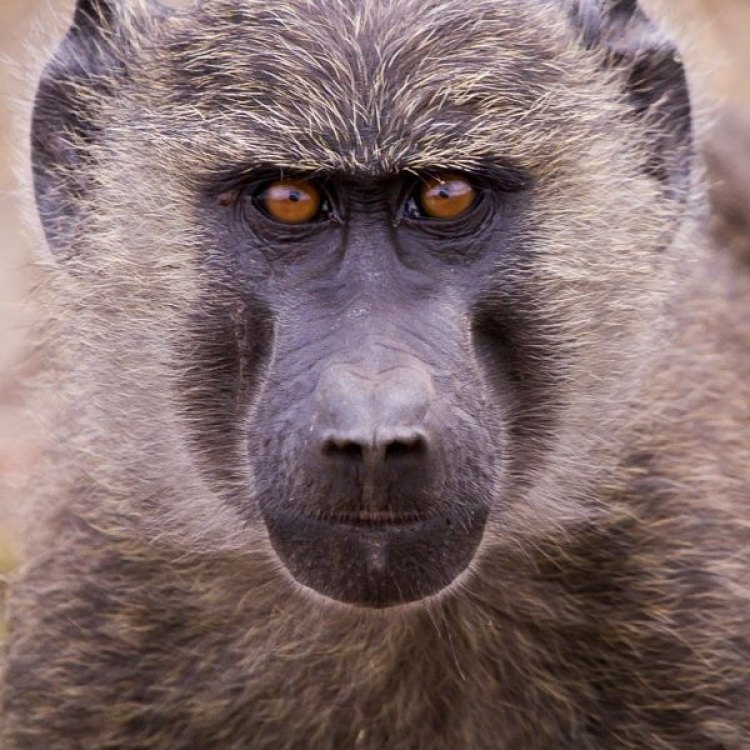
A Primate of Intelligence and Adaptability: The Olive Baboon
Disclaimer: The content provided is for informational purposes only. We cannot guarantee the accuracy of the information on this page 100%. All information provided here may change without prior notice.

